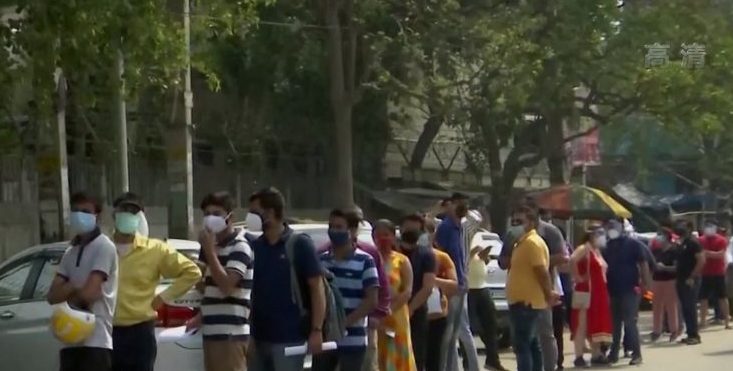According to the latest data released by the Ministry of Health of India, as of 8:00 local time on May 7, 414,188 new confirmed cases of Coronavirus have been reported in India in the past 24 hours, again reaching a new high in one-day cases since the outbreak in India, and again reaching a new high of new confirmed cases in a single-day single country in the world. The number of new cases in India has remained above 300,000 for 16 consecutive days. A total of 21491598 confirmed cases have been confirmed in India.
Indian media reported on the 6th, India’s Madhya Pradesh Chief Minister Chaohan said the same day, in order to curb the spread of the virus, they had to take “total blockade” measures to stop all unnecessary activities. The “total blockade” will take effect from now until 15 May, while the ban on gatherings, including weddings, will continue until the end of May. Previously, Madhya Pradesh had imposed a degree of blockade measures, but not as strong as this one.
Rural emergency India’s pandemic trend has not yet reached a “peak”
The threat of an outbreak is more acute in rural areas, which have 70 per cent of India’s population, where public health systems are weaker than in cities, and where outbreaks are worrying.
The government’s data model had previously predicted that the outbreak in India could peak by May 5, but for now, the actual outbreak figures are not.
Medical conditions are weaker Rural pandemic resistance is facing serious challenges
Media reports said that patients with Coronavirus in rural Areas of India are particularly difficult to get treatment in a timely manner because of inadequate local medical equipment, shortage of medical staff and the distance of the Coronavirus specialist hospital.
In the town of Susnell in Madhya Pradesh, India, many patients with Coronavirus have to be treated in open spaces under trees, and in some villages in Uttar Pradesh, many people mistook the infection for influenza because of information. Officials in the western state of Goa say the rate of new infections there is probably the highest in India, with almost one in two people diagnosed with the infection in recent weeks.
New Delhi TV reported that between 12 and 14 million migrant workers in India have recently returned home, most of them forced to return home because of the “sealing of cities” policy in big cities such as Mumbai and New Delhi, and the mass movement of people has increased the risk of rapid spread of the virus.
Indian medical experts: The actual number of infections is five to ten times higher than the official figure
Medical experts say the actual number of new coronavirus infections in India may be five to ten times higher than officially reported, due to inadequate detection capacity for new coronaviruses in rural areas and a lack of public awareness of the symptoms of new corona pneumonia infections. Moreover, India’s public health system is already overburdened, and nearly a third of India’s 1.3 billion people rely heavily on it, adding to the country’s pandemic resistance.
India’s central government has so far not adopted a nationwide comprehensive blockade measures, but as of 6, including Kerala, Maharashtra and the capital New Delhi, more than 10 states and regions have declared their own curfew or blockade.



